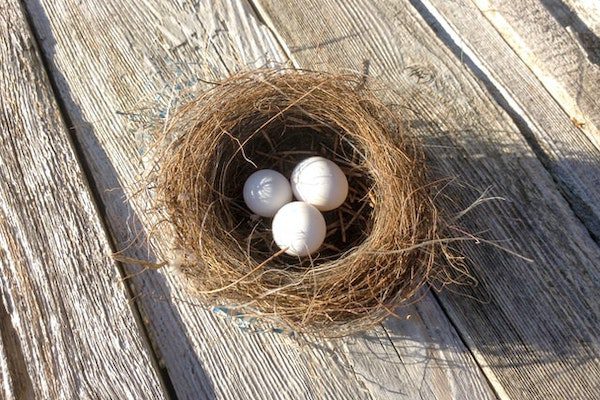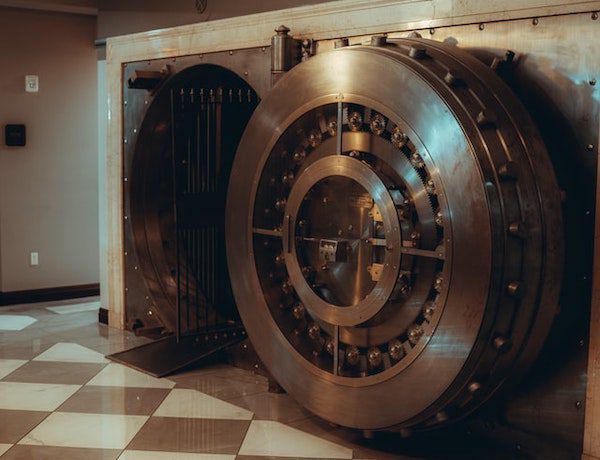
Building your nest egg is crucial to be financially secure long-term. Whether for your retirement savings, your first home purchase, or a rainy day fund, contributing to a financial nest egg provides stability and certainty for your future.
In this article, we'll break down how to fund your nest egg in Canada. We'll show you how to get started, tips to grow your savings, and how to protect what you save for years to come.
It's a safe bet to assume that you—like most working Canadians—will eventually want to retire. Moreover, when you finally do reach that milestone, it's safe to assume that you—like most Canadians—will also want to retain purchasing power well into your sunset years.
That's where your nest egg comes in.
Although you might have a pension to cover the cost of living, it might not be enough to cover all of your expenses. A nest egg gives you an extra cushion of cash to depend on while you earn a fixed-income.
But before you start saving any money, you'll need to make a plan.
But first...

The expression originates from 17th-century poultry farmers. Each morning, farmers would set aside a small amount of the eggs their hens laid. Rather than selling these eggs, farmers snuck them into their hens' nests the following night. This was believed to influence each hen into laying more eggs, while preventing them from ever stopping.
In other words, the farmers put aside a small amount of their earnings with the goal of achieving long-term success. This is where the modern use of the term comes from.
Brace yourself for some math up ahead! In this section, we'll breakdown how to start building your nest egg.
Note: If you have a spouse, don't forget to repeat these calculations with their earnings and retirement plan so you can factor in the money you'll both need.


You now have the amount you'll need to put away each week for the first year.
But we're not done yet! To protect your money from inflation, increase your contributions by 2% every year (...more on inflation in the next section).

Overtime, money loses its value. That's why you can't just stash your savings under your mattress.
Instead, you'll want to invest your money into a savings account, or invest it into other assets that will appreciate by at least 2% over time. Why 2%? That's the target rate of inflation set by the Bank of Canada. In other words, even if annual inflation is a bit more or a bit less, over time it will likely average around 2%.
One thing to keep in mind before you invest is that all assets are different. Some have greater risks than others. Knowing your risk tolerance, depends on how long you have left to save your nest egg.
Invest in things like bonds and mutual funds; investments that will be worth a modest amount more over time, and likely won't be worth much less down the road.
Your portfolio has more wiggle room when it comes to investing aggressively. Stock investments, and other assets that may go up and down in value in the short term, but are likely to grow in the long term, are more viable investment options for your retirement account.
TIP: If you have a high risk tolerance, but don't want to keep a constant eye on your investment portfolio, ask your investment broker about ETFs and Mutual Funds.
Although the two are different, they both function like their own portfolios—Both independently managed by expert investors. This means they have the potential to grow faster than bonds, while being very low maintenance on your end.

Despite everything you may do to try minimizing any uncertainty around your nest egg investments, sometimes life just happens.
That's why a cornerstone of every financial plan is adequate insurance coverage. To understand how much protection you'll need, ask yourself:
Now go back to the number of years before you'll need to draw from your savings. This will be the duration of coverage you'll want in order to ensure your nest egg reaches the amount needed for retirement time.

The most vital step to keep your money saved for retirement is simple: Keep it in your retirement account!
...Then again, perhaps that's easier said than done.
One tip is to have your bank put your money into investments automatically as soon as you receive the pay from your employer. That way you never have to think about it and can ignore the account until it's time you need to lay into it.
The other great tip is to consider insurance. With the right insurance, you won't have to dip into your nest egg if you ever need the cash for a medical emergency.

With the right plan, and the right protection, you can make sure you'll have enough money for your entire retirement.
Now that you're building your nest egg, you'll want to start looking for your best insurance protection.
Why not start your search with us? Simply fill out our easy questionnaire and get a quote from our expert team in minutes. There are no medical exams, and you are guaranteed to be approved.
Protecting your savings has never been this easy!
Get your free quote now by clicking the big button below: